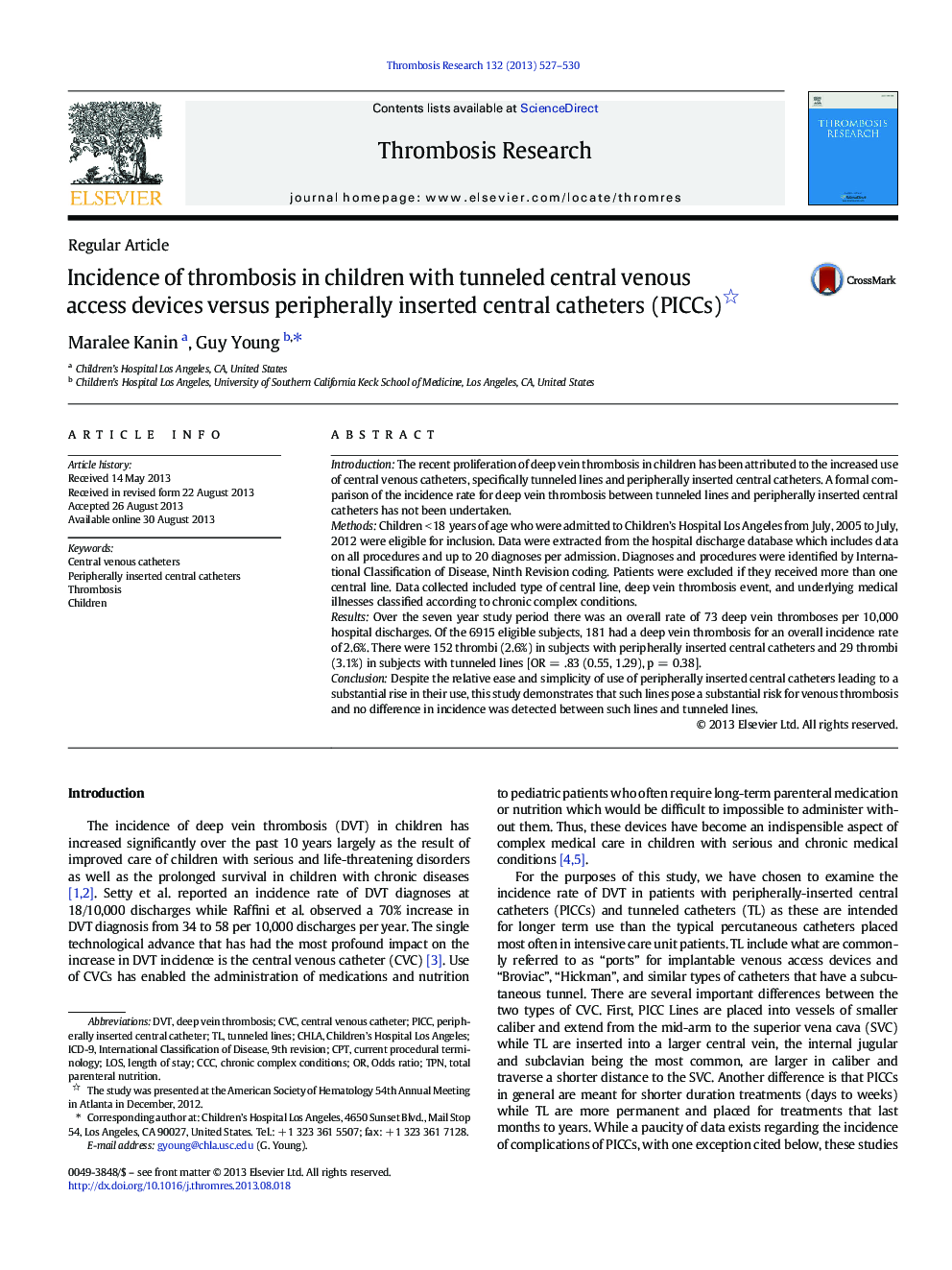| Article ID | Journal | Published Year | Pages | File Type |
|---|---|---|---|---|
| 6002726 | Thrombosis Research | 2013 | 4 Pages |
IntroductionThe recent proliferation of deep vein thrombosis in children has been attributed to the increased use of central venous catheters, specifically tunneled lines and peripherally inserted central catheters. A formal comparison of the incidence rate for deep vein thrombosis between tunneled lines and peripherally inserted central catheters has not been undertaken.MethodsChildren < 18 years of age who were admitted to Children's Hospital Los Angeles from July, 2005 to July, 2012 were eligible for inclusion. Data were extracted from the hospital discharge database which includes data on all procedures and up to 20 diagnoses per admission. Diagnoses and procedures were identified by International Classification of Disease, Ninth Revision coding. Patients were excluded if they received more than one central line. Data collected included type of central line, deep vein thrombosis event, and underlying medical illnesses classified according to chronic complex conditions.ResultsOver the seven year study period there was an overall rate of 73 deep vein thromboses per 10,000 hospital discharges. Of the 6915 eligible subjects, 181 had a deep vein thrombosis for an overall incidence rate of 2.6%. There were 152 thrombi (2.6%) in subjects with peripherally inserted central catheters and 29 thrombi (3.1%) in subjects with tunneled lines [OR = .83 (0.55, 1.29), p = 0.38].ConclusionDespite the relative ease and simplicity of use of peripherally inserted central catheters leading to a substantial rise in their use, this study demonstrates that such lines pose a substantial risk for venous thrombosis and no difference in incidence was detected between such lines and tunneled lines.
